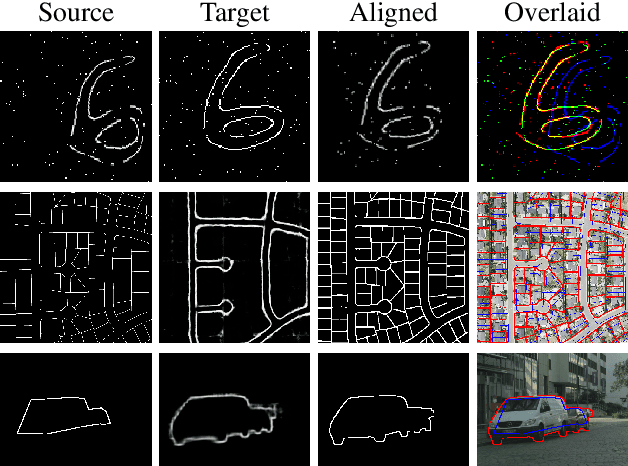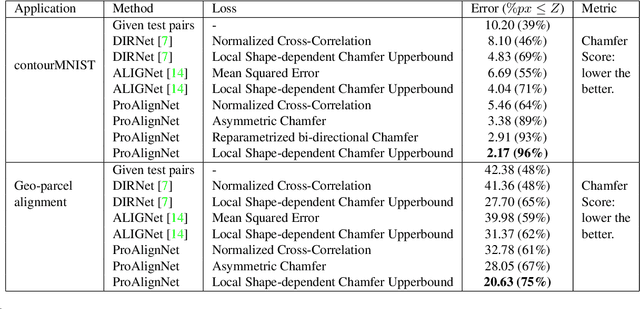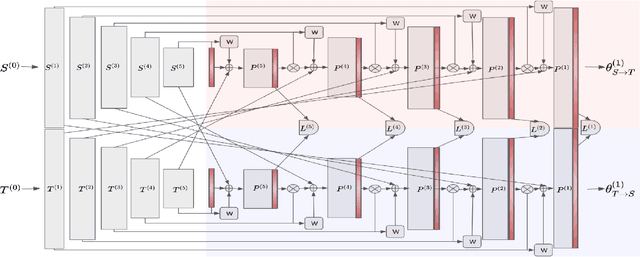ProAlignNet : Unsupervised Learning for Progressively Aligning Noisy Contours
Paper and Code
May 23, 2020



Contour shape alignment is a fundamental but challenging problem in computer vision, especially when the observations are partial, noisy, and largely misaligned. Recent ConvNet-based architectures that were proposed to align image structures tend to fail with contour representation of shapes, mostly due to the use of proximity-insensitive pixel-wise similarity measures as loss functions in their training processes. This work presents a novel ConvNet, "ProAlignNet" that accounts for large scale misalignments and complex transformations between the contour shapes. It infers the warp parameters in a multi-scale fashion with progressively increasing complex transformations over increasing scales. It learns --without supervision-- to align contours, agnostic to noise and missing parts, by training with a novel loss function which is derived an upperbound of a proximity-sensitive and local shape-dependent similarity metric that uses classical Morphological Chamfer Distance Transform. We evaluate the reliability of these proposals on a simulated MNIST noisy contours dataset via some basic sanity check experiments. Next, we demonstrate the effectiveness of the proposed models in two real-world applications of (i) aligning geo-parcel data to aerial image maps and (ii) refining coarsely annotated segmentation labels. In both applications, the proposed models consistently perform superior to state-of-the-art methods.
 Add to Chrome
Add to Chrome Add to Firefox
Add to Firefox Add to Edge
Add to Edge